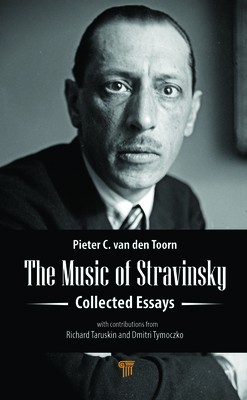
- We will send in 10–14 business days.
- Author: Pieter C Van Den Toorn
- Publisher: Jenny Stanford Publishing
- ISBN-10: 9814968625
- ISBN-13: 9789814968621
- Format: 15.2 x 22.9 x 2.9 cm, hardcover
- Language: English
- SAVE -10% with code: EXTRA
Reviews
Description
Igor Stravinsky was certainly the most celebrated Western composer of the 20th century and possibly the greatest as well. The essays in this volume, spanning more than forty, address the dynamics of Stravinsky's music from a variety of analytical, critical, and aesthetic angles. Underscored are the features of melody, harmony, rhythm, and form that would remain consistently a part of Stravinsky's oeuvre regardless of the changes in "stylistic" orientation from the Russian period to the neoclassical and the early serial. Works such as The Rite of Spring (1913), Les Noces (1917-23), the Symphony of Psalms (1930), and the Symphony in Three Movements (1945) are discussed in detail, as are many of the circumstances attending their conception. Other major concerns include the composer's formalist aesthetics and the strict performing style he pursued as an interpreter and conductor of his music.
EXTRA 10 % discount with code: EXTRA
The promotion ends in 19d.10:27:17
The discount code is valid when purchasing from 10 €. Discounts do not stack.
- Author: Pieter C Van Den Toorn
- Publisher: Jenny Stanford Publishing
- ISBN-10: 9814968625
- ISBN-13: 9789814968621
- Format: 15.2 x 22.9 x 2.9 cm, hardcover
- Language: English English
Igor Stravinsky was certainly the most celebrated Western composer of the 20th century and possibly the greatest as well. The essays in this volume, spanning more than forty, address the dynamics of Stravinsky's music from a variety of analytical, critical, and aesthetic angles. Underscored are the features of melody, harmony, rhythm, and form that would remain consistently a part of Stravinsky's oeuvre regardless of the changes in "stylistic" orientation from the Russian period to the neoclassical and the early serial. Works such as The Rite of Spring (1913), Les Noces (1917-23), the Symphony of Psalms (1930), and the Symphony in Three Movements (1945) are discussed in detail, as are many of the circumstances attending their conception. Other major concerns include the composer's formalist aesthetics and the strict performing style he pursued as an interpreter and conductor of his music.


Reviews